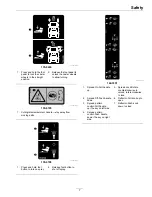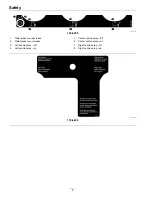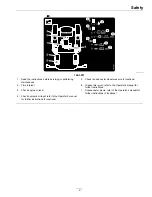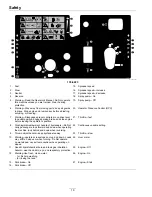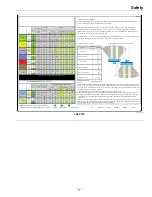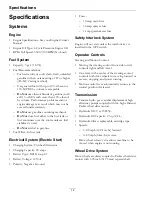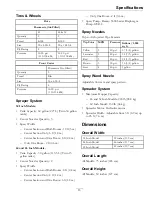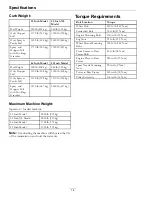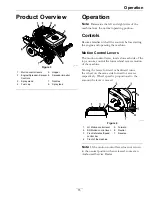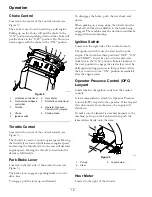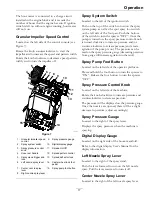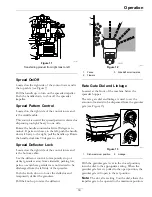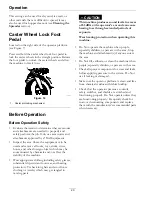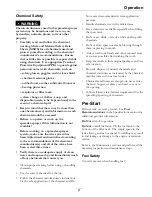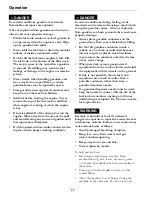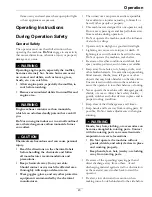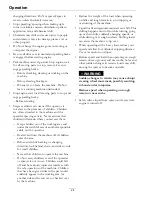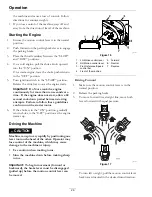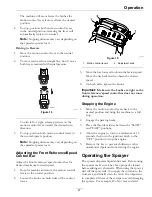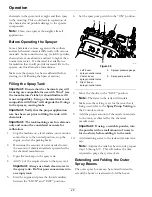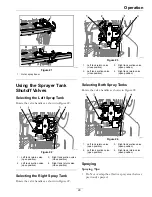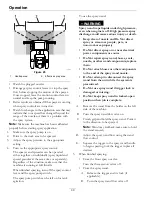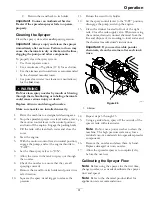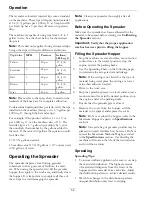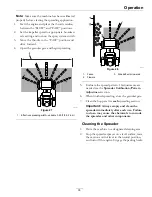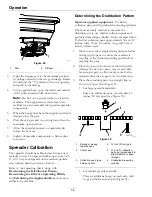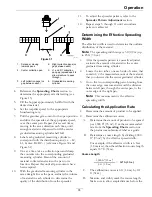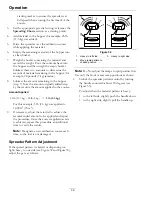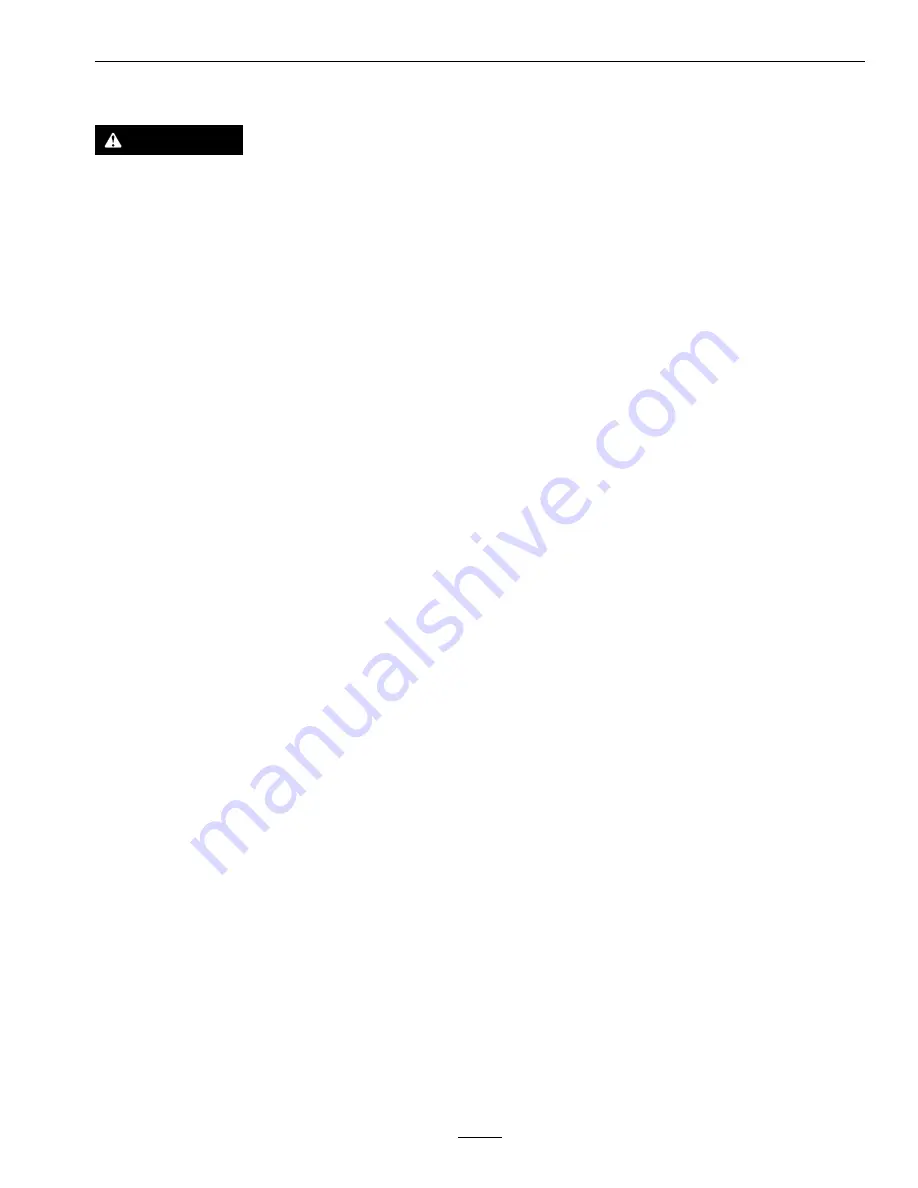
Operation
Chemical Safety
WARNING
Chemical substances used in the spreader-sprayer
system may be hazardous and toxic to you,
bystanders, animals, plants, soils or other
property.
•
Carefully read and follow the chemical
warning labels and Material Safety Data
Sheets (MSDS) for all chemicals used and
protect yourself according to the chemical
manufacturer's recommendations. Ensure
that as little skin as possible is exposed while
using chemicals. Use appropriate Personal
Protective Equipment (PPE) to guard against
personal contact with chemicals, such as:
– safety glasses, goggles, and/or face shield
– chemical resistant gloves
– rubber boots or other substantial footwear
– hearing protection
– respirator or filter mask
– clean change of clothes, soap, and
disposable towels, to be kept on-hand, in the
event of a chemical spill.
•
Keep in mind that there may be more than
one chemical used, and information on each
chemical should be assessed.
•
Refuse to operate or work on the
spreader-sprayer if this information is not
available!
•
Before working on a spreader-sprayer
system, make sure that the system has
been triple rinsed and neutralized according
to the recommendations of the chemical
manufacturer(s) and all of the valves have
been cycled three times.
•
Verify there is an adequate supply of clean
water and soap nearby, and immediately wash
off any chemicals that contact you.
•
Obtain proper training before using or handling
chemicals.
•
Use the correct chemical for the job.
•
Follow the chemical manufacturer's instructions
for the safe application of the chemical and Do
Not exceed recommended system application
pressure.
•
Handle chemicals in a well ventilated area.
•
Have clean water available especially when filling
the spray tank.
•
Do Not eat, drink, or smoke while working with
chemicals.
•
Do Not clean spray nozzles by blowing through
them or placing in mouth.
•
Always wash your hands and other exposed areas
as soon as possible after finishing the work.
•
Keep chemicals in their original packages and in a
safe location.
•
Properly dispose of unused chemicals and
chemical containers as instructed by the chemical
manufacturer and your local codes.
•
Chemicals and fumes are dangerous; never enter
the tank, hopper, or place your head over or in
the opening.
•
Follow all local/state/federal requirements for the
spreading/spraying of chemicals.
Pre-Start
Fill fuel tank on level ground. See
Fuel
Recommendations
in the Specifications section for
additional gasoline information.
Do Not
add oil to gasoline.
Do Not
overfill fuel tank. Fill the fuel tank to the
bottom of the filler neck. The empty space in the
tank allows gasoline to expand. Overfilling may result
in fuel leakage or damage to the engine or emission
system.
Refer to the Maintenance section and perform all the
necessary inspection and maintenance steps.
Fuel Safety
Use extreme care when handling fuel.
21

